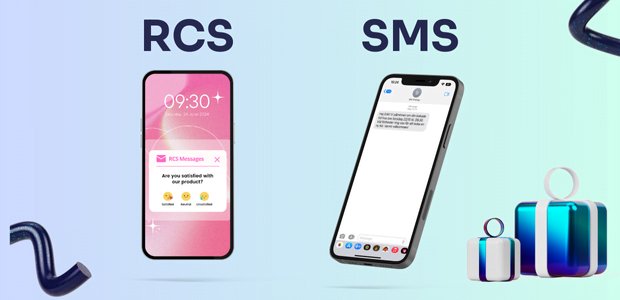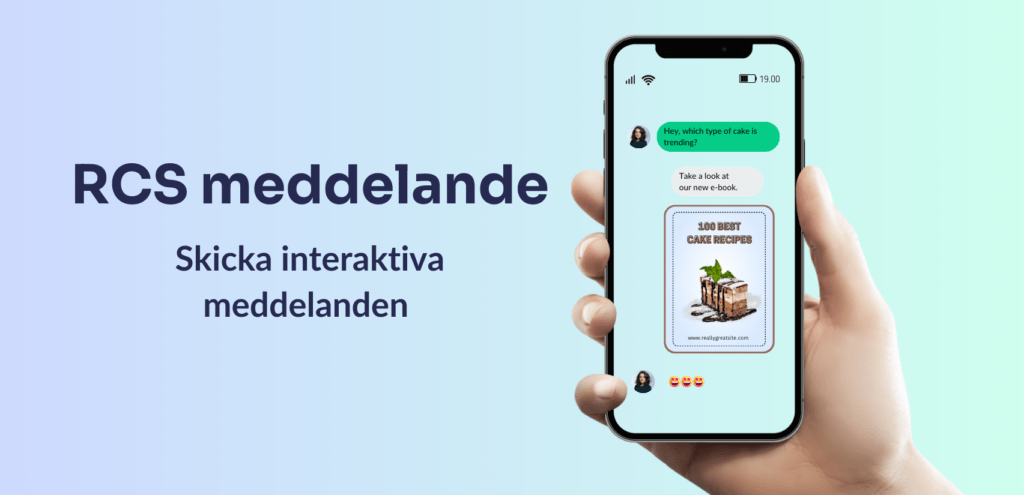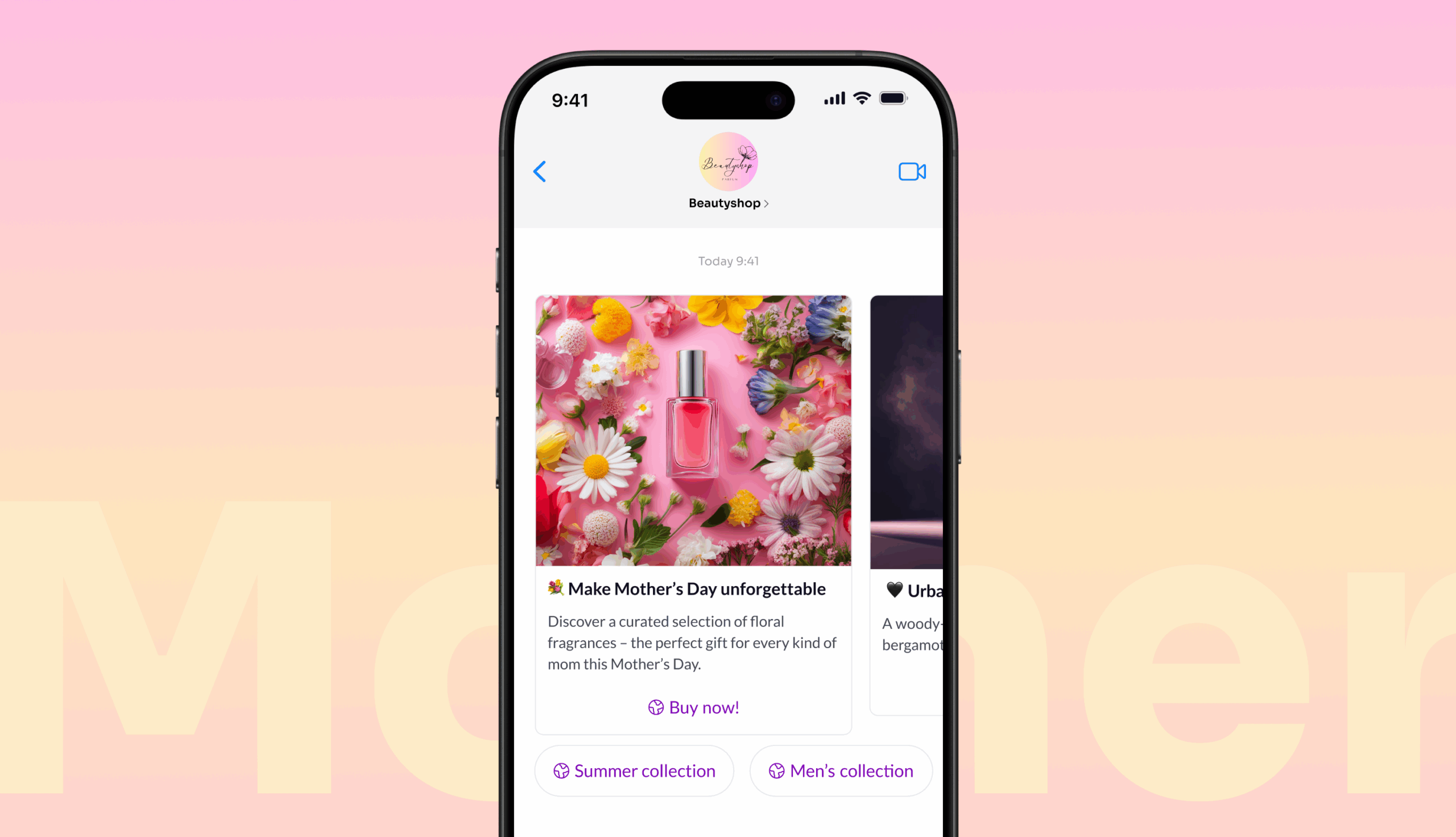Apple has now released support for RCS (Rich Communication Services) in its new iOS 18 update, marking a significant development in mobile communication.RCS represents the future of business communication, especially for those aiming to enhance customer experience and engagement. But what exactly is RCS, and how does it differ from traditional SMS?
What is the RCS message?
RCS stands for Rich Communication Services and represents the next step in the evolution of mobile messaging. While traditional SMS have limitations in terms of content and interactivity, RCS offers a more robust and versatile platform for communication. RCS messages can include multimedia such as images, videos, emojis and interactive buttons, making them much more dynamic and engaging than regular text messages.
The technology uses internet connections (Wi-Fi or mobile data) to send and receive messages, which in practice means it can deliver a better communication experience without the limitations of SMS.
Features and capabilities of RCS messages
RCS messaging offers several advanced features that go beyond what SMS can deliver:
- Multimedia support: RCS makes it possible to send and receive images, videos, audio files and documents. This creates a richer and more engaging messaging experience.
- Interactive elements: Companies can include buttons, maps and calendar invitations directly in the message, making it easier for recipients to interact.
- Read receipts and delivery status: Like popular messaging apps, senders can see when a message has been delivered and read, improving communication tracking.
- Group chats: RCS supports group chats, allowing for more efficient communication between multiple parties.
What is the difference between RCS and SMS?
Functionality
SCR
- Supports multimedia (images, videos, audio).
- Includes interactive elements such as buttons and maps.
- Provides soda receipts and delivery status.
- Supports group chats.
- Requires internet connection (Wi-Fi or mobile data).
SMS
- Limited to text-based messages with 160 characters per message.
- No multimedia or interactive elements.
- Delivery status only, no soda receipts.
- Uses the mobile network, no internet connection required.

Uses: RCS messages vs. SMS
RCS: Used to create engaging customer experiences, such as promotions with interactive offers, customer service via multimedia messaging, and two-factor authentication.
SMS: Mainly used for short and direct messages, such as reminders, alerts and authentication codes.
What are the benefits of RCS?
Improved user experience
RCS offers a much richer user experience compared to traditional SMS. Businesses can create visually appealing messages with images, videos and interactive buttons, increasing customer engagement. For example, a retail chain can send visual product catalogs and offer easy buy buttons directly in the message.
Higher engagement and conversion rates
Interactive elements such as buttons and maps make it easier for customers to reply to messages or perform actions directly from the message. This can lead to higher conversion rates and increased customer satisfaction. For example, a travel agent can send booking confirmations with an embedded map and check-in button, which improves the customer experience and is likely to lead to repeat business.
Safer communication
RCS supports two-factor authentication and other security features, making it a secure option for sending sensitive information and authentication codes. Businesses can use RCS to send verification codes for logins or transactions, increasing security for both the business and the customer.
End-to-end encryption: Like other modern messaging services, RCS offers end-to-end encryption, which protects messages from being intercepted or tampered with.
Comprehensive analysis
RCS gives companies access to more detailed analytical data. Unlike SMS, this also includes open and read rates, which in turn makes it easier to measure the effectiveness of your messaging campaigns. This allows companies to optimize their campaigns based on actual user data and improve ROI.
Applications of RCS in businesses
Sales and marketing
RCS can be used to send promotions and offers with interactive elements such as buttons and images. For example, an e-commerce store can send an interactive catalog with special offers, where customers can click to buy directly from the message.
Delivery and confirmation
For companies delivering products or services, RCS can be used to send delivery updates with real-time maps and rescheduling capabilities. This improves customer satisfaction by keeping customers informed and offering flexibility.
Reminders
RCS is effective for sending reminders about meetings, payments or events. For example, a health center can use RCS to remind patients of upcoming appointments with the option to confirm or reschedule directly from the message.
Authentication
RCS supports two-factor authentication, which is important to ensure the security of logins and transactions. Banks and financial institutions can use RCS to send verification codes and security alerts to their customers.
Feedback and surveys
Companies can use RCS to collect customer feedback through interactive surveys directly in the message. This provides faster and more useful feedback compared to traditional methods.
Concrete use cases with RCS in marketing:
1. Interactive campaigns
With RCS, marketers can create richer and more engaging campaigns by including images, videos, buttons and maps directly in the message. This can help grab the recipient’s attention and increase the likelihood of them interacting with the campaign.
Example: A clothing store can send out an RCS campaign with pictures of new collections, a video with fashion tips and a button that takes the recipient directly to the store’s website to make a purchase.
2. personalized offers
RCS makes it possible to send personalized offers based on the customer’s past purchases and behavior. This can increase the relevance and attractiveness of the offer, which in turn can lead to higher conversion rates.
Example: A loyalty program could use RCS to send special offers to customers who have made multiple purchases in the past, perhaps by including a personalized greeting and an exclusive discount code.
3. improved customer journeys
RCS can improve the customer journey by offering a seamless and interactive experience from first contact to purchase decision. By using RCS, marketers can guide customers through each step of the buying process using interactive messages.
Example: A travel agent can send an RCS message with an interactive travel guide that includes destination tips, hotel options, and a button to book the trip directly from the message.

4. Event marketing
For marketers managing events, RCS can be used to send out invitations, reminders and updates with interactive elements that make it easy for recipients to respond and participate.
Example: A company organizing a webinar can use RCS to send an invitation with a registration button, a calendar invitation, and a reminder the day before the event.
5. Feedback and surveys
RCS can also be used to collect customer feedback by sending out interactive surveys directly in the message. This can provide faster and more useful feedback than traditional methods.
Example: After a purchase, a business can send an RCS survey where customers can rate their experience and provide comments, with buttons to provide quick feedback.
6. Catalogs and product launches
RCS is ideal for sending out digital product catalogs and announcements of new product launches. With rich media and interactive elements, these messages can be much more engaging than traditional SMS or emails.
Example: An electronics store can send out an RCS message with an interactive product catalog where customers can click on products to see details, watch video reviews and directly add them to their cart.
7. customer service and support
RCS can be integrated with customer service systems to provide faster and more efficient support. Customers can initiate calls, get answers to frequently asked questions and even book support appointments directly through interactive RCS messages.
Example: A telecom provider can use RCS to send support guides with pictures and step-by-step videos, as well as offer a button to chat directly with a support agent.
RCS is on the move and Rule is always one step ahead
RCS messaging is the communication tool of the future for companies that want to improve their customer communication. With its interactive and multimedia features, RCS offers a richer and more engaging user experience than traditional SMS. Businesses can benefit from RCS to create more engaging campaigns, improve customer service, ensure secure communication and collect valuable customer feedback. For companies that want to stay ahead, it’s time to start considering RCS as part of their communication strategy. We are very happy to announce that we now have full support for RCS. Read more about RCS in Rule.





